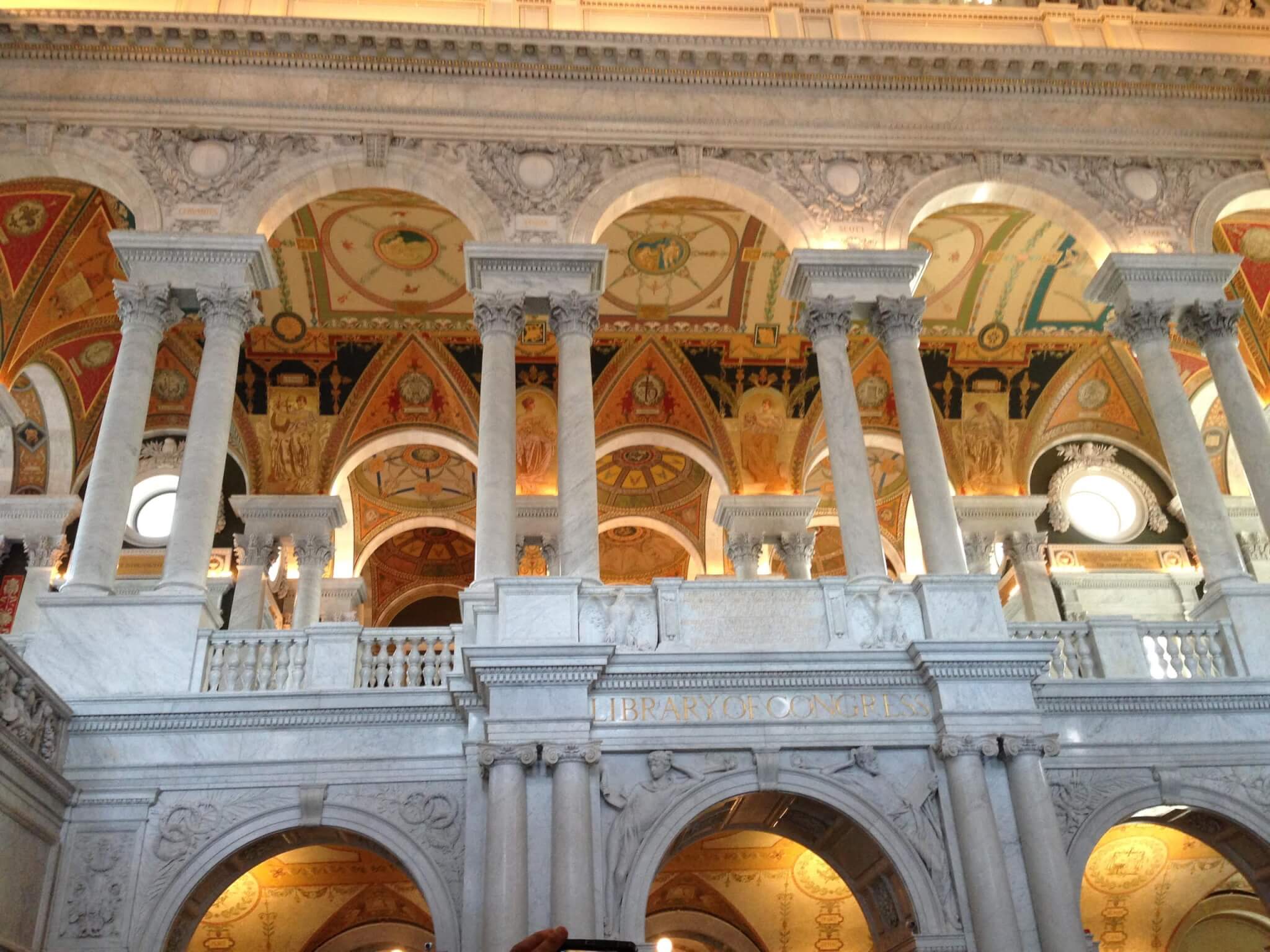Shenandoah University’s proximity to Washington, D.C., makes taking advantage of the sights, sounds and experiences of our nation’s capital a possibility and a privilege. National treasures in the forms of monuments, museums, libraries, theatres and restaurants — just a 70-mile drive from campus — beckon the curious, the academic and the epicurean.
On Feb. 27, a group of faculty and graduate students traveled to the Library of Congress with the goal of touring the facility and furthering their research studies across various subject areas.
The group departed campus before dawn, and after arriving at the carriage entrance of the Folger Shakespeare Library in Washington, D.C., they were greeted by Librarian Abby Yochelson, M.L.S., an English and American Literature specialist, who arranged a docent-led, one-hour tour of the historic Jefferson Building. Afterward, participants registered for library cards and met with subject specialists in their areas of study.
The remainder of the visit was spent exploring the various reading rooms, admiring the library’s incredible architecture, researching on its databases, viewing such priceless artifacts as the Gutenberg Bible and President Thomas Jefferson’s personal library collection, and wandering through such diverse exhibits as “Civil Rights Act of 1964,” “Grand Illusion: The Art of Theatrical Design” and “Mapping a New Nation: Abel Buell’s Map of the United States 1784.”
Graduate Programs Librarian Rosemary Green, Ph.D., organized a similar trip during the Spring 2014 semester.
“Last year’s trip was met with so much enthusiasm from the faculty and staff, that I decided to repeat the excursion,” said Dr. Green. “This year, we doubled our participation and were able to draw in graduate students as well. The Library of Congress offers unsurpassed resources, collections, and opportunities — all of which we are now accessing as a university community.”
According to its website, the Library of Congress’ mission is “…to support the Congress in fulfilling its constitutional duties and to further the progress of knowledge and creativity for the benefit of the American people.” Surprisingly, anyone age 16 or older with a valid driver’s license, state-issued identification card or passport can obtain a free reader identification card and gain access to the library’s many resources.
For most researchers visiting the Library of Congress, the journey of discovery begins in the Main Reading Room. As the home the library’s reference collections, the computer catalog center, and knowledgeable reference staff, the Main Reading Room’s purpose is to make library research easily accessible to anyone with enough curiosity to pursue it.
“What a fantastic trip!” said Department of World Languages and Cultures Chair Bryan Pearce-Gonzales, Ph.D. “It was breathtakingly gorgeous. Additionally, I was surprised at just how helpful the librarians were. They spent about two hours with me in the Hispanic reading room showing me around and teaching me how to do research most efficiently there.”
“I was stunned by the history of the Library of Congress, the aesthetics of the building, the amounts and diversity of books the library holds, the current exhibitions, and of course the ability to research in the main reading room with scholars from across the United States and perhaps other countries,” said Petra Schweitzer, Ph.D. “I was able to access rare publications needed for my teaching/scholarship on ‘Women and Homosexuals in the Holocaust.’
“I was also amazed by the time and attention we received from the librarian specialists to accomplish our tasks,” Dr. Schweitzer said. “When we arrived at the library, all pre-ordered books were handed to us for immediate use.”
“One could spend a lifetime combing through the vast collections at the LOC, so a one-day trip is almost like a cruel tease,” said Assistant Registrar and Degree Audit and Conferral Specialist Valerie Taylor. “The Library staff is outstanding! Many of our group met with experts who assisted them with researching their particular areas of interest. This kind of personal attention is what really makes this trip a rewarding and valuable experience.”
“My research contact, Darren Jones, was wonderful,” said Professor of Teaching English to Speakers of Other Languages (TESOL) Liz England, Ph.D. “He was kind, competent and totally informed on issues in my world of academic research. I had communicated with him directly prior to the visit, and he had some ideas for things I could do to get more information and to correct information that was wrong or wasn’t available previously. We were both interested in a document he helped me to find that contains a lot of redacted material.”
The Library of Congress began in 1800 with a small appropriation to buy reference books. It was originally housed in the U.S. Capitol’s West Center Building until the Thomas Jefferson Building opened in 1897. Today, it consists of three buildings on Capitol Hill: the Jefferson Building, the James Madison Building and the John Adams Building. Other collections are housed in the Packard Campus of the National Audio-Visual Conservation Center in Culpeper, Virginia, as well as other secure government locations. Under its auspices, the Library of Congress literally holds millions of printed books, and through its online databases, provides researchers with access to electronic databases that connect the library to data collections around the world.
by Cathy Loranger, M.S., APR (D.Prof. candidate)




